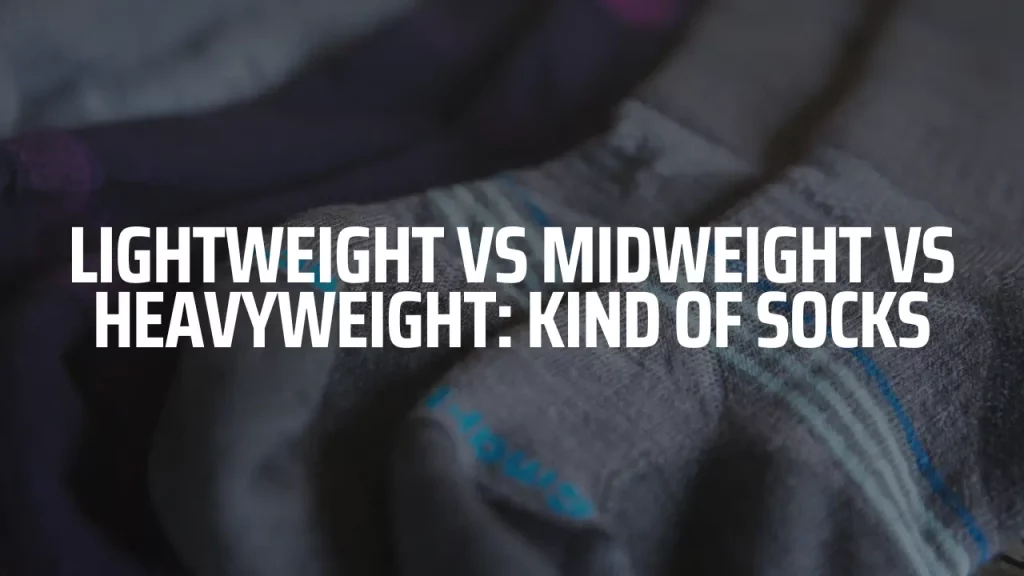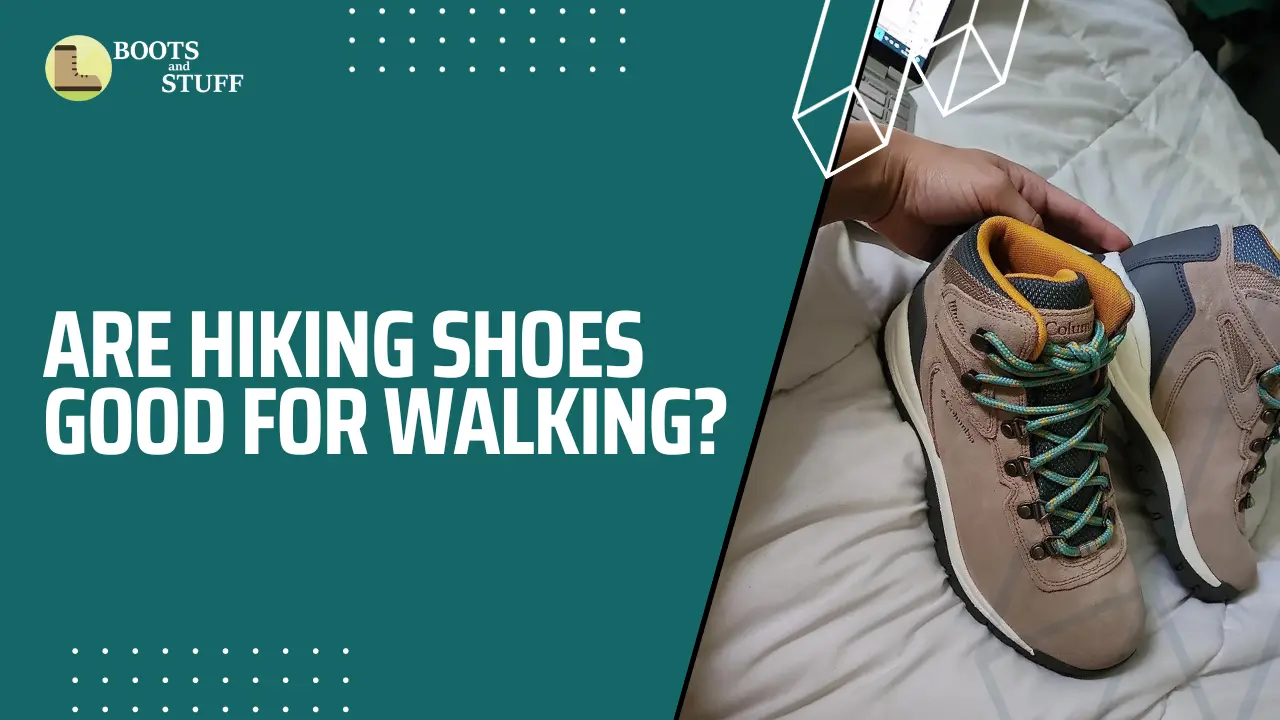Contents
- How to choose Hiking socks?
- What material to consider when choosing hiking socks?
- Consider Hiking Sock Height
- Lightweight Vs Midweight Vs Heavyweight: kind of socks
- Other Factors To Look Out for When Choosing Pair of Socks for Hiking
- Frequently Asked Questions
- What kind of socks to wear hiking in the summer?
- Are merino wool socks good for summer?
- What kind of socks to wear hiking in the winter?
- Are Merino wool hiking socks good for winter?
- What are the best socks for winter hiking boots?
- What kind of socks to wear for hiking?
- Should you wear two pairs of socks when hiking?
- Why are cotton socks bad for hiking?
- Why are crew socks so popular?
How to choose Hiking socks?
When it comes to hiking, your gear can make or break the adventure. While we often focus on finding the perfect hiking boots, one crucial element is often overlooked: the best hiking socks.
These unsung heroes play a vital role in keeping your feet comfortable, supported, and blister-free on the trails. In this section, we’ll uncover the secrets to choosing the right hiking socks that will keep your feet happy and make your hiking experience a breeze.
Get ready to step into the world of comfortable trekking!
What material to consider when choosing hiking socks?

When it comes to hiking socks, the right fabric is key. Consider these options:
Wool: Keeps your feet dry and fresh, with great moisture-wicking and odor-resistant properties.
Polyester: Lightweight, durable, and dries quickly—ideal for wet conditions or fast drying needs.
Nylon: Provides strength and moisture-wicking, keeping your feet dry during intense hikes.
Silk: Smooth and lightweight, suitable for shorter hikes or less challenging terrains.
Spandex: Adds elasticity for a snug fit, ensuring comfort and preventing slipping.
Choose the fabric that suits your moisture control, temperature needs, and durability preferences. Enjoy your hike in ultimate comfort!
Consider Hiking Sock Height
Finding the perfect sock height for your hiking boots can make all the difference. Here are three options to consider: crew, quarter, and ankle socks. Crew socks, extending above the ankle, offer reliable coverage and protection against blisters and debris. They’re versatile and suitable for most hiking conditions.
Quarter socks, reaching just above the ankle bone, strike a balance between coverage and breathability. They’re perfect for warmer weather and low-intensity hikes. Ankle socks, sitting below the ankle bone, provide lightweight comfort and excellent breathability. They’re ideal for hot climates and high-intensity activities. Choose the sock height that suits your preferences, weather conditions, and the demands of your hike. Keep in mind factors like terrain, temperature, and ankle support.
Whatever height you go for, prioritize moisture-wicking, cushioning, and durability to ensure ultimate comfort and protection on your hiking adventures.
Lightweight Vs Midweight Vs Heavyweight: kind of socks

When it comes to selecting socks for your hiking boots, it’s important to understand the differences between lightweight, midweight, and heavyweight options:
Lightweight socks: Designed for warm weather and low-impact hikes, these socks are breathable and wick away moisture. They have minimal cushioning, providing agility and quick drying.
Midweight socks: Versatile and suitable for most hiking conditions, midweight socks strike a balance between cushioning and breathability. They offer moderate padding and effective moisture management.
Heavyweight socks: Perfect for cold weather, rugged terrains, and longer hikes, heavyweight socks offer maximum warmth and protection. They are thick, moisture-wicking, and provide ample cushioning for demanding adventures.
Consider the specific hiking conditions, weather, and your personal preferences when choosing sock weight. By experimenting with different options, you can find the ideal combination of comfort, support, and protection for your hiking trips.
Other Factors To Look Out for When Choosing Pair of Socks for Hiking
Hiking Sock Cushioning: When choosing socks for hiking boots, consider the cushioning level that suits your needs:
No Cushioning: Thin and lightweight for close fit and minimal padding.
Light Cushioning: Balanced comfort with some shock absorption and breathability.
Medium Cushioning: Moderate padding for various terrains and longer hikes.
Heavy Cushioning: Maximum protection and shock absorption for rugged terrain.
Consider the terrain, weather, and personal preference when selecting socks. Look for moisture-wicking and ventilation features. Finding the right cushioning balance ensures comfort and enjoyment on the trails.
Best Hiking Socks Fit:
Choose socks that fit snugly without being too tight. Consider the height based on the hike’s length and weather conditions. Opt for moisture-wicking materials like merino wool or synthetics. Prioritize comfort and minimize foot-related issues.
Frequently Asked Questions
What kind of socks to wear hiking in the summer?
Choosing the perfect socks for summer hiking is crucial for a comfortable and enjoyable experience. Here’s what you need to know:
Material matters: Opt for moisture-wicking fabrics like merino wool or synthetics. They keep your feet dry and reduce the risk of blisters.
Lightweight is key: Choose socks that are thin or medium-thickness to prevent overheating. Thick socks can trap heat and moisture, leading to discomfort.
1. Cushion wisely: Look for socks with cushioning in the right places, like the heel and ball of the foot. However, avoid excessive cushioning to keep your feet cool and comfortable.
2. Perfect fit: Ensure your socks fit snugly without being too tight. A proper fit prevents sliding, bunching, and friction, minimizing the chances of blisters.
3. The right height: Consider your hiking boots’ height and choose socks that provide adequate coverage. Crew-length or quarter-length socks are generally suitable.
By selecting the right socks for summer hiking, you’ll keep your feet dry, comfortable, and blister-free, making every step on the trail a pleasure.
Are merino wool socks good for summer?
Absolutely! Don’t let the word “wool” fool you. Merino wool socks are the ultimate choice for summer hiking. They work wonders in keeping your feet dry and fresh by wicking away moisture. Breathable and odor-resistant, these socks provide the comfort you need on those hot and sweaty adventures.
Embrace the power of Merino wool and elevate your summer hiking experience!
What kind of socks to wear hiking in the winter?
When you’re gearing up for winter hiking, choosing the right socks is crucial. Here are some tips to keep in mind:
1. Go for socks made of moisture-wicking and insulating materials like merino wool or synthetics. They’ll keep your feet dry and cozy in chilly and damp conditions.
2. Look for thicker, cushioned socks. They provide extra insulation and cushioning for those rugged winter trails. Your feet will thank you!
3. Make sure the socks fit well without being too tight. You want a snug fit that keeps your circulation flowing freely.
4. Prioritize socks that are designed to keep your feet warm and dry in the cold and wet. They’ll be your best buddies during winter hikes.
5. For the ultimate comfort, consider combining moisture-wicking, insulating, and cushioned socks. Your feet will stay happy and content throughout your winter adventures.
Remember, happy feet make for happy hikes!
Are Merino wool hiking socks good for winter?
Absolutely! Wool socks are a fantastic choice for winter hiking. Why? Well, wool is a natural insulator that keeps your feet toasty warm, even in chilly conditions.
Plus, these socks are great at wicking away moisture, so your feet stay dry and comfy. They provide extra cushioning and support, making those long hikes a breeze.
When it comes to winter adventures, trust wool socks to keep your feet cozy and well-protected.
What are the best socks for winter hiking boots?
For winter hiking, the right socks are vital to ensure warmth, dryness, and overall comfort. Here are key considerations:
Wool Socks: Opt for high-quality wool, like merino, which insulates and wicks away moisture for dry, warm feet in snowy or damp conditions.
Moisture-Wicking Socks: Choose socks with moisture-wicking materials to keep feet dry and prevent blisters caused by moisture buildup.
Cushioned and Thermal Socks: Look for socks with added cushioning and thermal properties for insulation and comfort during long winter hikes.
Seamless Construction: Seek socks without seams to minimize friction and reduce the risk of blisters.
Proper Fit: Ensure a snug fit to prevent slipping or bunching while avoiding tightness that can restrict circulation. Investing in quality winter hiking socks tailored to your needs will guarantee comfortable and protected feet during cold-weather adventures.
What kind of socks to wear for hiking?
Choosing the right socks for hiking is essential. Here are a few key tips:
Material: Go for moisture-wicking fabrics like merino wool or synthetics to keep feet dry and prevent blisters.
Cushioning: Look for socks with padding in the heel, toe, and arch for added comfort and shock absorption.
Length: Opt for mid-calf or crew-length socks to avoid rubbing and chafing.
Fit: Ensure socks fit snugly without being too tight for better support and to prevent blisters.
Investing in high-quality hiking socks will greatly enhance your hiking experience and keep your feet happy on the trails.
Should you wear two pairs of socks when hiking?
The choice of wearing two pairs of socks while hiking is subjective. Here are some considerations to help you decide:
Pros: Two pairs can offer extra cushioning and insulation, reducing blisters and providing warmth in colder climates.
Cons: It may increase bulk, leading to discomfort and a tighter boot fit, potentially causing foot pain.
Conclusion: Experiment with different sock combinations on shorter hikes to find what works best for you. Comfort and foot protection should be prioritized for an enjoyable hiking experience.
Why are cotton socks bad for hiking?
Beware of cotton socks on the hiking trail. They soak up moisture, leaving your feet wet and blister-prone. What’s worse, when wet, they offer no insulation, leaving your feet cold and uncomfortable. Opt for moisture-wicking, quick-drying socks made from synthetic or wool materials for a happier hiking experience. Your feet will thank you.
Why are crew socks so popular?
Crew socks have gained popularity among hikers for several reasons:
1. Cushioning and Comfort: Crew socks offer extra padding and support, ensuring a comfortable hiking experience while protecting against blisters and abrasion.
2. Moisture Management: Made from moisture-wicking materials, crew socks keep your feet dry by drawing away sweat, minimizing the risk of fungal infections.
3. Protection and Stability: With their higher cut, crew socks shield your feet and ankles from debris and provide stability, preventing them from sliding down or bunching up.
4. Versatility: Crew socks are suitable for various weather conditions, providing insulation in colder climates and breathability in warmer ones.
Durability: Designed to withstand rugged terrains, crew socks are durable and often reinforced in high-stress areas like the heel and toe.
Read more
Looking for more recommendations to help you get more outside? Check out our more blogs –
– How to Choose a Hiking Boot- Do’s and Don’ts
– How Should Hiking Boots Fit
– How to Wash Hiking Boots in the Washing Machine
– Are Hiking Shoes Good for Everyday Use?- The Truth
– Are Hiking Boots Good for Work?




